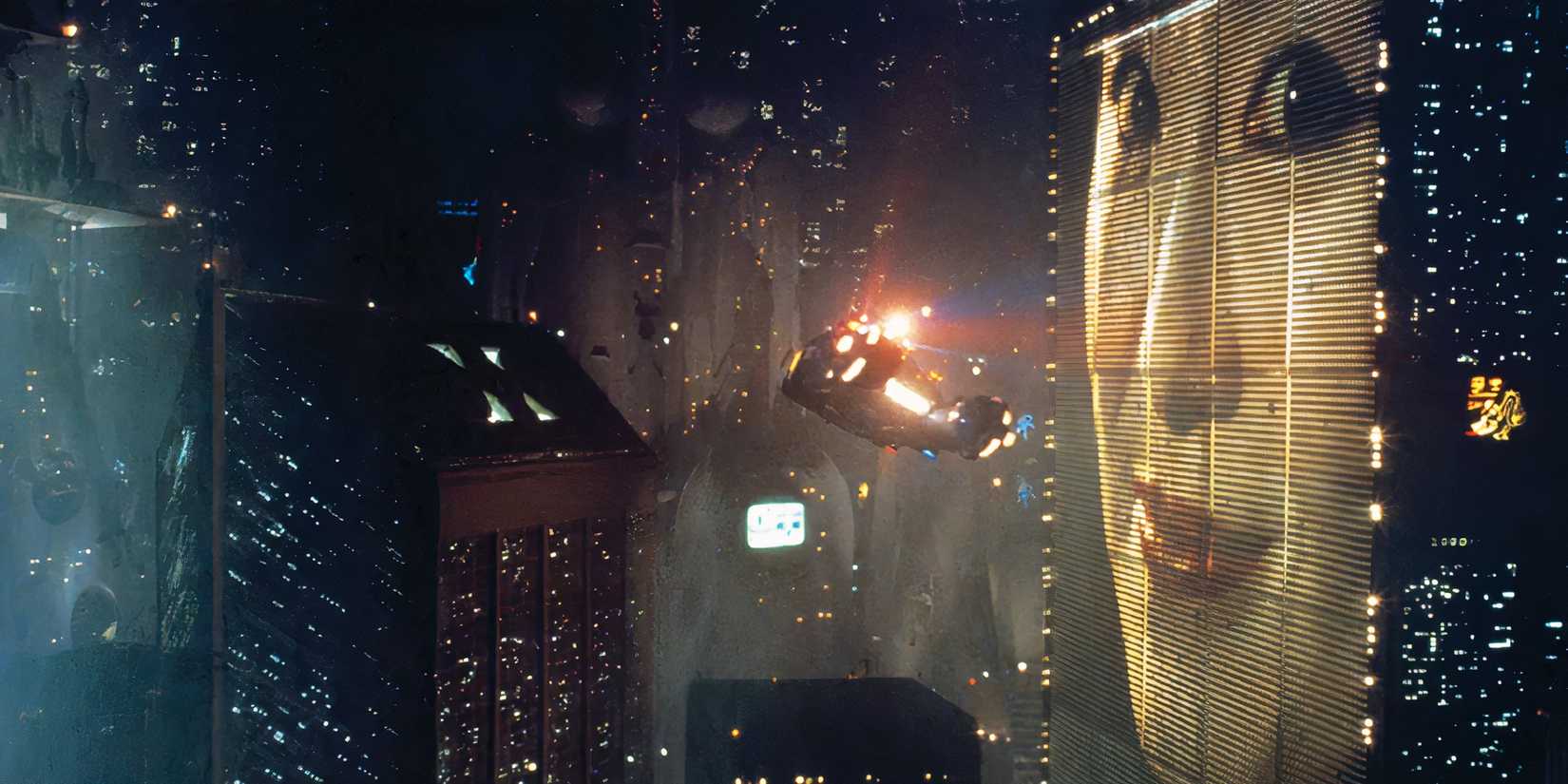10 Greatest Sci-Fi Movie Settings, Ranked
With its unique perspective on themes of morality, power, and what it means to be human, enrapturing stories of otherworldly adventure, and sheer imaginative brilliance, science fiction cinema is one of the most immersive and intriguing genres the medium has to offer. Of course, perhaps the most defining aspect of this sense of transfixing wonder is the splendor of the settings where its stories unfold.
Ranging from mesmerizing alternate worlds and dystopian future cities to more confined spaces like spaceships and even to completely perplexing locales like a murderer’s mind, the sci-fi settings on this list are the most vibrant, interesting, and in-depth that the genre has seen on the big screen. Some of these settings have become more acclaimed and memorable than the movies they featured in, while others are integral ingredients in some of the most iconic films of all time.
10
23rd Century New York City – ‘The Fifth Element’ (1997)
Futuristic cities are a common setting for sci-fi cinema. What distinguishes the good from the great in this regard is often the level of detail involved, the impact it has on the story, and, of course, the sheer visual and visceral wonder of the city on display. The Fifth Element is a perfect example of this being done exceptionally well, envisioning a landscape of even more pronounced verticality supported by its incorporation of flying cars and its sense of lived-in detail.
The film’s eccentricities and contrasts help define this environment as well, with everything from the vibrant and wonderfully over-the-top fashion trends to the duality between the high-tech glamour and the grungy, dirty monotony of the average person instrumental in establishing the film’s unforgettable tone and style. As a sci-fi story, The Fifth Element has proven to be an impressionable though divisive picture. As a bold immersion into style and setting, however, it is a commanding and confident gem of wild flourishes and eye-catching dare that epitomizes sci-fi at its most effervescent and experimental.
9
Carl Rudolph Stargher’s Mind – ‘The Cell’ (2000)
Using an inherent sci-fi premise as a doorway to visceral horror, The Cell is an intriguing movie, perhaps more so than it is an outstanding one. It follows child psychologist Dr. Catherine Deane (Jennifer Lopez) as she enters the mind of a comatose serial killer, hoping to find answers as to the whereabouts of his last victim, who may still be alive. As a narrative, it is a little clunky, but as a captivating descent into the depravity of the human psyche, it is a visually astounding viewing experience.
Doing practically all the heavy lifting, the setting is a flawless mixture of the volatility of terror untethered from reality and the effervescent brilliance of Tom Foden’s production design. Through the use of extreme surrealism, powerful symbols, and an extravagant and overwhelming utilization of color and composition, The Cell brings to life the inner workings of a deranged mind with an eye for aesthetic divinity and deep meaning. It brings a sense of dread to the spectacle while enhancing the sci-fi journey with richness and tremendous artistry.
8
USCSS Nostromo – ‘Alien’ (1979)
For all the highs and lows of the Alien franchise, it has always been blessed with outstanding settings, be it the moon colony base in Aliens, the penal colony prison in Alien 3, or the distant planet in Prometheus. However, it is Ridley Scott’s 1979 original film that features the best of the lot, with the rigid, claustrophobic simplicity of the USCSS Nostromo perfectly establishing an air of cold hostility in the form of a realistic and sparse industrial cargo ship.
To be fair, every set in the film is an immaculate masterpiece of atmospheric design and intricate detail, but the confines and lived-in functionality of the USCSS Nostromo are pivotal to establishing the film’s immersive air of authenticity. It marries sci-fi spectacle with a feeling of aged, rusted-on practicality and a rich, futuristic Gothic horror allure to make for a setting that is as transfixing as it is terrifying, with every dimly-lit corridor posing a threat and every sterile and cold room presenting an aura of unfeeling, inhuman indifference.
7
The Grid – ‘Tron: Legacy’ (2010)
While 1982’s Tron stands as a pioneering use of CGI in filmmaking, it is the 2010 legacy sequel Tron: Legacy that best depicts the video game world referred to as “the grid” or even “the system.” With its mesmerizing aesthetic defined by streams of neon blue and orange cutting along the digital darkness, “the grid” enraptures with its eye-catching sense of style as well as with its innate air of danger and competitiveness.
Granted, the setting is more memorable and majestic than the film itself, but it still imbues the movie with startling artistry, given how it blends visual and practical effects while being firmly rooted in real-world materials like glass, steel, and concrete. The architectural approach lends an air of visceral tangibility, a feeling of gravitas and grounded sci-fi fantasy that ensures the action mayhem on display resonates with the desired impact.
6
The “Zone” – ‘Stalker’ (1979)
In true Andrei Tarkovsky fashion, Stalker enchants as a slow and poetic journey through a thematic idea more so than as a sharp and concise narrative of high stakes. This endeavor is beautifully supported by the grim yet captivating setting, the post-apocalyptic ruin of an industrial world, complemented by flourishes of natural scenery. Unsettling and atmospheric, it presents an eerie world of emptiness and loss as it follows its enigmatic characters on their journey to a mythicized room where one’s greatest wishes can come true.
Tarkovsky achieved this by using real decaying Soviet Union power plants as locations and by carefully framing industrial debris to evoke a sense of hopelessness and desolation. While many sci-fi movies transpire in post-apocalyptic settings, few are able to match the detail, depth, and provocative mood of Stalker. The brilliance of this world-building is a huge reason why the 1979 film is so widely revered as a genre classic and as a defining triumph of international cinema.
5
Dark City – ‘Dark City’ (1998)
With an ensnaring aesthetic that blends elements of high-concept sci-fi, neo-noir intrigue, and German Expressionism, Dark City presents an appropriately complex and convoluted setting to support its story of mystery, conspiracy, and lost identity. With John Murdoch (Rufus Sewell) searching for answers after waking up in a hotel bathtub and being investigated by police for a series a murders, the titular Dark City is a labyrinthian, enigmatic landscape of night-bound bleakness that Murdoch must scour in order to get to the truth.
Achieved through meticulously constructed sets and a vibrant sense of style, Dark City presents a disorienting and dreamlike world of duplicity and darkness, a maze of ever-shifting, sporadic architecture and ties directly into the story’s theme of manufactured reality, ensuring the city itself is not only unique and enticing, but an active participant in the narrative. At once choking and grandiose, fragmented and holistic, Dark City is an achievement of atmospheric divinity from production designers George Liddle and Patrick Tatopoulos and art directors Richard Hobbs and Michelle McGahey that makes for one of the most enthralling sci-fi settings of all time, and a criminally underrated sci-fi movie.
4
Metropolis – ‘Metropolis’ (1927)
A pioneering triumph of sci-fi cinema, Metropolis is one of the medium’s—let alone the genre’s—most influential films, a stunning union of narrative might and visual magnificence. Through the extensive use of miniatures and the striking imagery of German Expressionist film, Metropolis crafts an enrapturing futuristic cityscape defined by both fine detail and awe-inspiring magnitude, conjuring a sense of scale befitting of its story of power, manipulation, and social revolution.
Even today, almost 100 years after the release of the film, the impact of Metropolis remains plain to see, not only in its pioneering use of practical effects and filmmaking techniques, but in its idea of the mechanical enormity and heartlessness of a dystopian future. Presenting a dread-inducing sense of scale that facilitates the film’s focus on class struggles and the dangers of unchecked technological advancement, the titular city stands as a groundbreaking icon, a timeless feat of production design brilliance.
3
Pandora – ‘Avatar’ (2009)
A fictional world of hypnotic beauty, Pandora is a landmark accomplishment in the context of CGI technology in cinema. An alien planet of textured biodiversity, wonderful scale, and spellbinding visual splendor, it serves as the setting of the Avatar films. The idyllic natural divinity on display feeds directly into the story’s theme of mankind’s destruction of the environment in pursuit of wealth and the devastation imparted on native inhabitants and their land when invading forces take over.
Focusing on landmarks like the Tree of Souls and thoroughly exploring the nature of the wildlife, the brilliance of the Avatar films is defined as much by the depth and detail of its environment as much as they is by the technical mastery that brings it to life. With the looming release of Avatar: Fire and Ash set to further expand the story world, the franchise as a whole features not only one of the most immersive settings in sci-fi cinema, but one of the most intricately explored and finely crafted worlds in film history.
2
2019 Los Angeles – ‘Blade Runner’ (1982)
Blade Runner features what could easily be the defining aesthetic of modern sci-fi. Its gritty allure, laced with strobes of neon light and neo-noir-inspired shadows, clashes majestically against its vision of a technologically advanced dystopia plagued by overpopulation, environmental catastrophe, and a palpable sense of social inequity. In addition to featuring a thought-provoking story of morality and the nature of humanity, Ridley Scott’s 1982 masterpiece is also famous for pioneering the cyberpunk style that has influenced a great many sci-fi stories over the past four decades.
None of these imitators, however, has surpassed Blade Runner, with the production featuring both elaborate, intricately designed miniatures and astonishing full-scale sets to conjure the night-soaked cityscape that defines the allure and aura of the film. Inspired by the visionary excellence of “visual futurist” Syd Mead—who was also involved with the aforementioned films like Alien and Tron (1982)—Blade Runner presents one of the most involving and gloriously bleak yet beautiful environments to have ever graced the screen. Furthermore, it offers what is arguably the single most important setting in sci-fi, if not of all time, then from the mid-20th century at the very least.
1
A Galaxy Far, Far Away – The ‘Star Wars’ Saga
The backdrop of one of cinema’s greatest ever franchises, one that presents the full scope of science-fiction wonder, the Star Wars galaxy is a setting of limitless potential, engrossing detail, and sheer imaginative brilliance. From the desert planet of Tatooine to the forest moon of Endor, the dense swampland of Dagobah, to the snow-swept ranged of Hoth, and to a great many planets and locations beyond, the Star Wars story unfurls in what is one of the most expansive and enthralling narrative worlds ever conceived.
While its blending of sci-fi and fantasy endows it with unlimited creative freedom, its inspirations are both apparent and beautifully weaved together, from the B-movie sci-fis of the ’50s to the grit of spaghetti Western cinema, and to the gravitas and style of Japan’s samurai films. The original trilogy thrives at using this scope to explore themes of war, tyranny, and rebellion in a manner that is considered but still invigorating and exciting. As the Star Wars saga has continuously expanded over the decades, so too has its extravagant setting.












